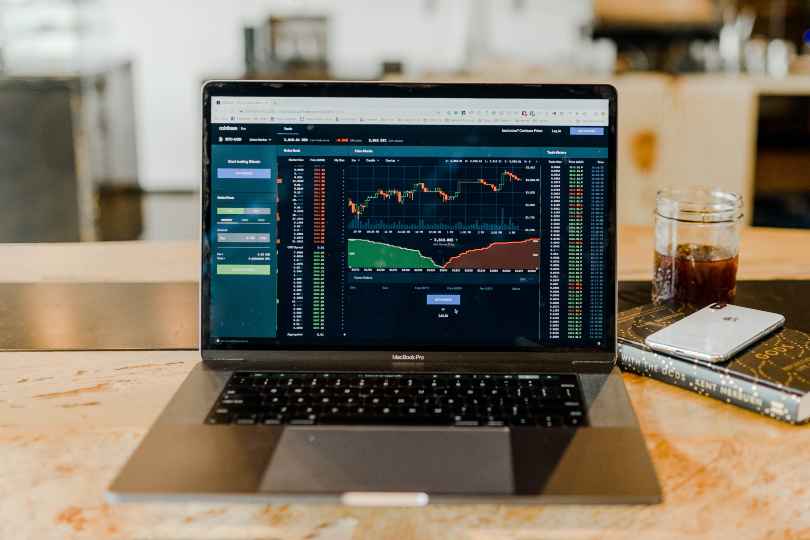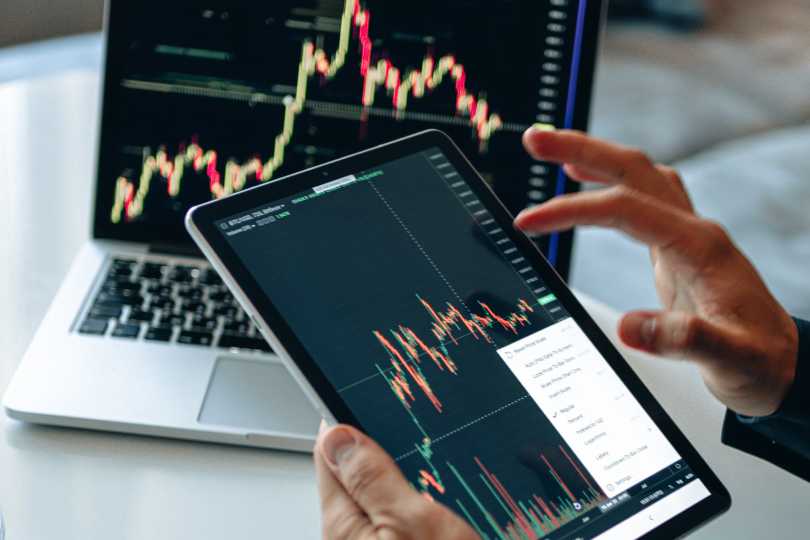
In this guide, I’ll explain how prop forex trading works, how to start forex prop trading, and what to focus on while becoming a successful prop trader.
During the last few years, proprietary trading firms have risen to prominence in financial markets, presenting a great solution for profitable traders who seek additional funding.
Also consider: Which Forex trading platforms to choose for proprietary trading
5 Easy steps to trade forex prop
- Define your trading goals – decide your comfort zone and your realistic returns.
- Explore your trading style – find out which approach to trading best suits your personality.
- Find a prop trading firm that fits your criteria – Find a prop trading firm from our selected prop firm trading list.
- Decide which account to use – Find out which account best suits your goals.
- Create a sustainable trading plan– integrate all of the steps into an actionable trading strategy.
Trusted partner
![]()
75% of retail investors lose money when trading CFDs with forex.com.
Commission-free trading
- Low-cost
- 80+ FX Pairs
- Proprietary platform
What is proprietary trading?
Proprietary trading is a financial institution’s direct activity in the financial market. The prop trading firm participates using its own capital and funds, usually when it believes it has a competitive advantage in generating excess returns (Alpha).
In the past large financial institutions often had dedicated prop trading floors, but nowadays, many dedicated prop trading firms offer their services to remote traders classified as contractors.
Forex broker trading software
A prop trading firm will provide trading software for market access and a real-time price feed. Although some prop companies use in-house servers for these feeds, most prop firms outsource them to established forex brokers.
Recently, white-label solutions have become more popular. In this situation, the broker provides the prop trading company with software, servers, and account access for their customers.
These solutions typically involve MetaQuotes’ MetaTrader 4, the most popular forex broker trading software. Some companies offer a newer version, MetaTrader 5, while rare prop trading firms work with TradingView or cTrader.
Despite a golden standard in the industry, MetaTrader 4 is almost 20 years old and will eventually be replaced. Most recently, Apple banned Meta Trader software from its App Store in September 2022, eventually reinstating it in March 2023. Although it quoted security concerns, the fact that MetaQuotes’ CEO is a Russian citizen sparked discussions among the brokers.
Finally, it is vital to understand that forex broker software solutions from a prop trading firm will offer demo trading. Demo market conditions are similar to live markets with the most significant exception in market depth.
Outsized bets can move the market outside popular trading sessions like London or New York – resulting in slippage. Therefore, prop trading platforms and firms are trying to simulate these conditions since they intend to copy these trades in a live environment.
How do forex prop firms work?
Forex prop trading firms operate a simple business model. Their first income stream comes from selling access to capital in exchange for fees.
This concept is akin to the software-as-a-service (SaaS) business model, as selling an additional unit creates a negligible marginal cost for the company. Issuing a new demo account is automated, and an initial investment into a single server can support many accounts.
Most prop firms outsource liquidity providing to specialized brokers. Thus scalability rarely becomes an issue.
Interestingly, if prop trading firms only had this source of income, they’d de-facto operate as a Ponzi scheme, as payouts would come from new customers. However, they’re not Ponzi schemes.
Prop firms, at least legit ones, copy the profitable traders and take a percentage of their winnings as a second income stream. Therefore, a prop trading firm collects all the funds from unsuccessful traders and a percentage of winnings from profitable traders. Its additional costs include software licensing, liquidity providers, and staff compensation.
5 Steps to start forex prop trading in detail
Step 1 – Define your trading goals
A journey without a destination in mind can be perilous – particularly regarding an endeavor like trading, which requires a strictly disciplined approach.
I like splitting my goals into short-term (anything less than one year from now) and long-term. This approach helps in setting priorities and staying focused on the task ahead. In the software industry, developers often say that it is vital to ship code fast and often – focus on achieving small goals often and frequently to build confidence and establish a routine.
Prop trading can be similar. For example, a short-term goal could be to obtain two prop accounts, while a long-term goal might be to achieve a 4% monthly return.
In many ways, trading is similar to weightlifting. If you take weights that are too light, you might struggle to take your training seriously and adequately stimulate your muscles. Yet, if you go too heavy – you will fail and possibly get injured. Therefore, the goal is to find the optimal zone – a place just on the border of comfort and slowly but steadily progressive overload.
Eventually, you might reach your peak – in the prop trading case, that might mean amassing so much capital it becomes permanently uncomfortable. However, by then, the comfort zone might provide such high absolute returns that scaling up doesn’t matter much.
Step 2 – Explore your trading style
Trading style is just like personality. Everybody has one.
In fact, it is more tied to personality than one might think. I believe that trading style largely depends on risk aversion and aptitude for information processing.
Finding the right combination of risk tolerance and defining the trading timeframe helps find the suitable trading style, which is necessary for long-term success.
Risk aversion defines the zone of comfort, but all prop trading firms have risk tolerance included in one of their hard rules. Therefore, a prop trader has to decide how to work with these restraints. For example, a risk-averse prop trader with a 5% daily loss limit might only risk 0.5% per position and slowly increase this up to 1% after building confidence in the strategy.
The strategy itself will highly depend on aptitude for information processing. Traders who thrive in dynamic, fast environments will prefer short-term, trading strategies. They go after small opportunities, often multiple times per day, achieving a quick capital turnover, yet go through more emotional swings and at the cost of making more mistakes.
On the other side, traders who prefer a slower and steadier approach might take only a handful of trades in a month. They experience fewer emotional swings but stay in trades for a longer time. This approach generally requires more capital to be feasible.
Step 3 – Find a proprietary trading firm that fits your criteria
After defining the goals and finding the suitable trading style, it is time to find a prop trading firm that fits those needs.
For a long time, I had issues with top proprietary trading firms forcing time constraints. Making 10% within a month was possible but unrealistic within my risk tolerance.
Luckily, as competition grew, many prop trading firms lowered their requirements, and nowadays, some offer as little as 8% phase 1 and 5% phase 2, or 10% single phase profit requirements with no time limit.
I find no time limit challenges the best, as they allow experienced traders and even beginners to test their strategies. Taking unnecessary risks while chasing outsized returns is one of the most significant issues for traders of any experience level.
Step 4 – Decide which account to use
Picking a suitable prop firm account will depend on both the appropriate size and trading style. Both are individual preferences, with size largely depending on personal income.
A reasonable plan is to start smaller and then use the profits and refunded fees to scale in. Most prop firms offer account sizes from $5,000 to $200,000, but in some instances, it can be smaller or bigger.
A few years ago, when prop trading popularity picked up, most prop trading firms had a standardized “challenge” approach, offering funded accounts to new traders that pass two challenge rounds, profiting a predefined percentage.
Since then, this approach significantly evolved. Nowadays, account types differ by many factors, like the following:
- No time limits
- Holding trades over the weekend
- Allowing expert advisors (EAs)
- Earning from day 1 (instant funding, rapid funding)
- Accelerated scaling (quick size increases for profitable traders)
- 1-step challenges (instead of 2)
- Swap-free (Islamic accounts)
There are many options, and it takes careful consideration before committing to a particular account type.
Step 5 – Create a sustainable trading plan
Long-term trading is a marathon, not a sprint. It requires planning and mental fortitude to stick with the plan through the unprofitable periods that are inevitable for even the best traders.
A quality prop trading plan considers all the information described in the previous steps. This plan is where prop firm requirements, restrictions, and benefits meet personal goals and trading styles. It integrates all those factors that make for a sustainable plan.
There is no one-size fits all solution for this purpose. Still, many successful prop traders seem to do the following: They cut the risk once they pass the challenges, specialize in one or few assets they trade, avoid overtrading and focus on scaling the funds to the point where low percentage returns generate significant sums of money.
Is prop trading profitable?
An old saying goes, “90% of traders lose 90% of their funds within 90 days”. Prop trading is no different than regular trading, except that traders must adhere to some rules.
Inherently, this is a good thing as it helps to build good habits, particularly regarding risk management. In the long run, I believe that prop trading profitability doesn’t differ much from regular trading, as most traders will be losing, while a minority will be winning.
Interestingly, those who studied prop trading firm data claim few characteristics shared among top winners. They’re specialists who trade few financial instruments (often just one); they trade with low leverage and target reasonable monthly returns (3-5%).
Is prop trading illegal?
Prop trading is a fully legal practice, and most prop companies allow traders from all countries except those on the list issued by the US Office of Foreign Assets Control (OFAC).
Still, many legal questions exist regarding the traders’ status, taxation, or regulation. A general rule of thumb is that prop traders classify as independent contractors who receive compensation for their services.
The usual practice is that any contractual disputes belong under the jurisdiction of the prop trading firm, which is obliged to provide that information in the contract.
Furthermore, it is vital to note that an income earned from prop trading doesn’t classify as capital gains – therefore, the trader (contractor) is eligible for income tax in the jurisdiction of their residence. Professional prop traders often manage their tax exposure by operating through limited liability companies (LLCs) located in tax havens.
Yet, this information doesn’t constitute legal advice as it might differ based on your place of residence. All traders should consult a specialized tax lawyer to check local laws and regulations.
Can you make a living with prop trading?
Yes, prop trading for a living is possible, but it isn’t a regular occurrence.
The reason for that is the emotional stress of risk management is an inevitable part of any trading. Traders go through cycles of fear and greed, mitigating both by adhering to their pre-set rules.
However, relying exclusively on income from prop trading forces traders to take unnecessary risks since many of their other expenses are fixed, while their income varies.
For this reason, prop traders that work for investment banks have base salaries. Yet, these new prop firms don’t offer salaries, with few exceptions, and only for elite traders.
Thus, an individual prop trader might decide to work part-time to cover the base cost and treat prop income as a discretionary bonus.
How much do prop traders make?
In one of the modern Sherlock Holmes shows, Mr. Holmes, referring to the law of averages, says, “A famous statistician once stated that while the individual man is an insoluble puzzle, in the aggregate, he becomes a mathematical certainty. You can, for example, never foretell what any one man will do, but you can, with precision, say what an average man will do. Individuals vary, percentages remain constant.”
As prop accounts come in different sizes, from $5,0000 to $500,000 or even more – it is impossible to discuss how much prop traders make in absolute terms. Still, some interesting statistics uncover how the best traders operate.
First of all, the highest payout percentage goes to traders that specialize in one single thing. That might be a single forex pair, a single CFD, or perhaps even Bitcoin. However, 6% of specialists earn over 43% of total payouts.
In my opinion, the best traders have unrivaled discipline and the ability to sit on their hands until the opportunity presents itself, even if it means entering just a handful of trades each month.
Extrapolating from the recent MyForexFunds (MFF) data, I’d estimate that long-term successful prop traders make anywhere between 4-8% per month, using a low-risk approach and bailing on the losers quickly. For a trader with a $100,000 prop account, this means making between $4,000-8,000 before the profit split.
MFF states that 80% of the biggest winners (monthly payout of over $20,000) used a stop loss, and 99% closed losing trades before they hit the stop loss. Furthermore, forex trades were more profitable if they were held for longer than 6 hours, as traders let their profits run.
Which Prop accounts to avoid?
Prop trading got into the spotlight by offering challenge accounts. Usually, these were 2-step or 1-step challenges, with a goal of making anywhere between 5%-10% profits. For example, paying $500 for a $100k challenge after making $10,000 (10%). Other accounts might offer slightly different conditions, like lower profit splits but faster scaling.
However, as a primary swing trader with several good opportunities per month, I avoid challenges with time limits. Being under time pressure and forcing trades to meet a threshold is likely the fastest way to go bust.
Furthermore, I completely avoid any instant funding accounts. These accounts give you immediate access to capital, but in my opinion, they just prey upon unsuspecting novices.
When you get a trading account, the real amount of money at your disposal is actually your total drawdown. Still, every market can have dishonest operators, and dishonest prop firms might offer instant accounts with total drawdowns that are equal to or even less than the fee.
Novice traders might not realize they’re better off trading their own funds rather than agreeing to such a disadvantageous deal.
Conclusion – Prop trading is beneficial on multiple levels
Over the last few years, prop trading has changed the forex market, following the tailwinds of the work-from-home model.
In the past, prop traders had to pass an interview to get a position in a firm and then undergo rigorous multi-month training. Eventually, they would get access to live capital but still trade from an office desk.
Online prop firms don’t offer training, but they offer fast access to capital, and their rules help traders cultivate discipline – the most important habit for long-term trading.
If you follow the guidance from this article, you will create a solid base for a successful prop trading career.
Finding the right balance might take some time and effort. Therefore, starting small, creating positive habits, and slowly scaling using the profits might be the sound approach to prop trading.
Proprietary trading FAQs
What does proprietary trading mean?
What percentage do prop traders make?
Please note:
This article has been prepared for information purposes only by Stjepan Kalinic. It does not constitute advice, and no party accepts any liability for either accuracy or for investing decisions made using the information provided. Please do your own research.




